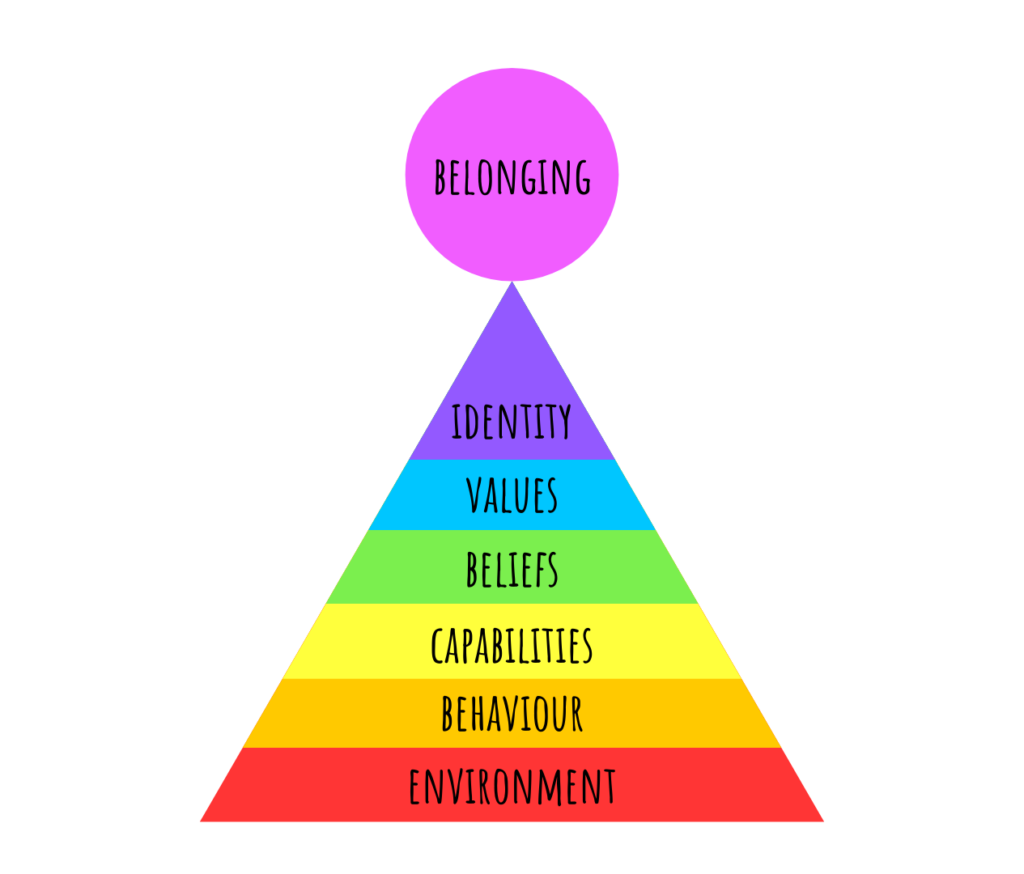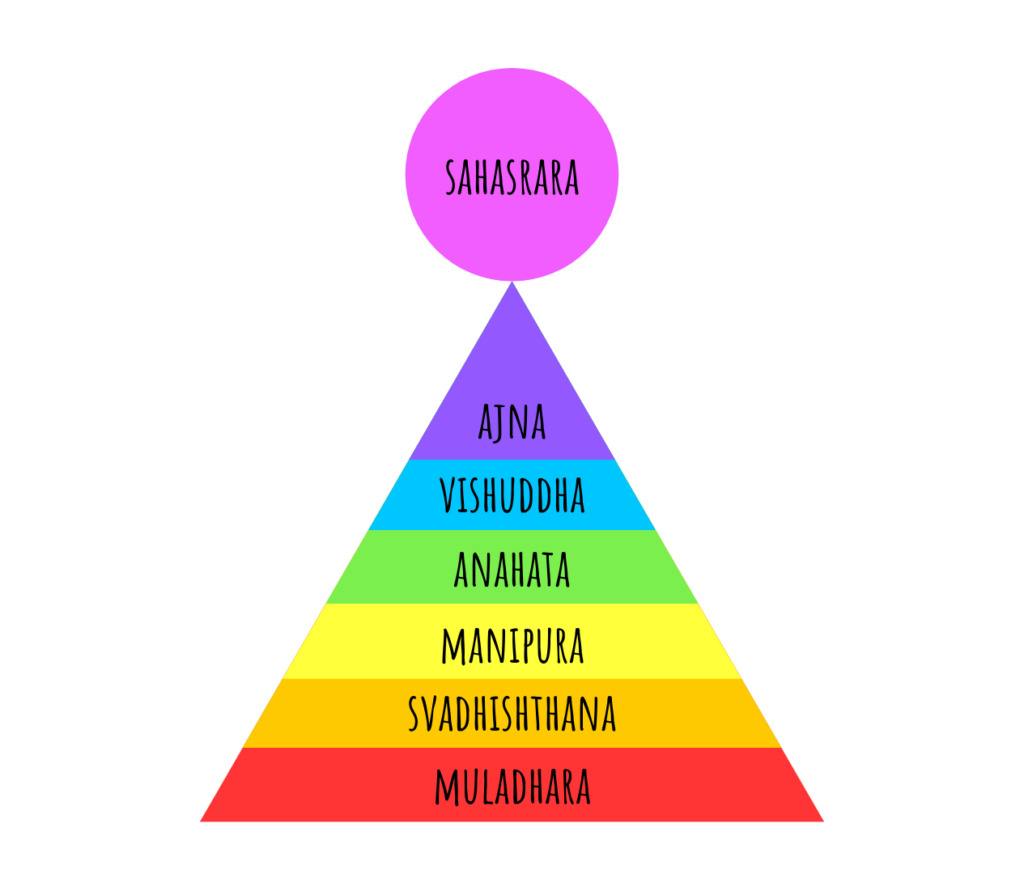Hypnosis and Yoga – The Pyramid of the Neurological Levels and the chakras (1/2)
As a hypnotherapist and yoga teacher, I would like to make a link here between the Neurological Levels Pyramid, which is an NLP technique widely used in hypnotherapy, and the Chakra system, which is very popular among yogis and also used in Yoga Nidra.
Not all hypnosis techniques were familiar to me at first, it’s a learning process, but the technique called Neurologic Level Alignment was very natural for me from the start.
This is because it ties in with the chakra system of yoga, which I had been familiar with for a long time.
What is the Neurological Levels Pyramid?
It is attributed to Robert Dilts who developed it as part of Neuro-Linguistic Programming (NLP)*.
There are many ways to explain the Neurological Levels Pyramid. It describes the way in which a situation, an intention, a project, structurally fits into a person, or how a situation, an intention, a project is attached (well or badly) to our personal structure.
This makes it possible to identify at what level there is a ‘problem’, i.e. a mismatch between the person in the broad sense and this situation. And therefore at what level to solve the problem.
Robert Dilts’ idea is that a problem at a given neurological level must be solved by working at a higher neurological level.
Once this higher level is healed or “aligned”, all the lower levels will align spontaneously, by adaptation.
This pyramid originally has 6 levels, but variants with 5 or 7 levels can also be found.
It is of course the 7-level variant that interests us in order to make the analogy with the 7 chakras described in yoga.


The easiest thing to do is to use an example. You will probably find various examples on the Internet, my favourite is the example of a driver regulating the speed of their car on a road**, which has the advantage of being very concrete.
Environment
The speed of a car is related to the distance it travels in a given time.
We remain here in the material environment, on a concrete level.
This first level is the analogue of the “Muladhara” chakra, the root chakra, which is at the base of the torso.
It is the chakra related to our material existence and our material needs related to our survival. In essence, it is the environment, the place we occupy, that enables our survival. In other words, the car works and the road is passable.
Behaviour
Pressing the accelerator pedal is a behaviour that modifies speed.
We always stay at a specific level, that of our actions, of our gestures, which have consequences in one direction or another.
The corresponding chakra is called “Svadhishthana”, it is situated about 5 cm below the navel. It is related to emotions, the unconscious, sexuality and the pleasures of life.
This chakra is involved in our actions whenever it is related to pleasure seeking, addictive behaviour or emotion. It is therefore a very common driver of our actions in daily life.
If this chakra is imbalanced in one way or another, we are either in perpetual pursuit of pleasures or, on the contrary, we systematically prohibit them.
Capabilities
The capability to stay below the speed limit is related to the mental control the person has over their foot.
This neurological level raises the questions “How?” and “By what power?”, it is not only the mental control, but also the skill of the driver, the flexibility and strength of their muscles, a certain talent.
A parallel can be drawn with the “Manipura” chakra, situated at the level of the solar plexus.
Effectively, “Manipura” represents our inner fire, either the fire of digestion or the “sacred fire” which gives us the ability, the power, to move forward in life. It is especially linked to self-confidence, self-esteem and self-respect.
Here, our parallel allows us to rediscover to what extent self-confidence is absolutely essential to be able to evolve in one’s existence.
